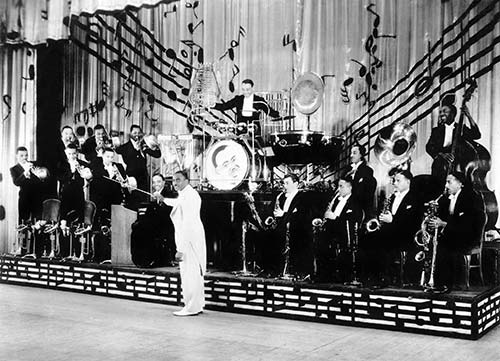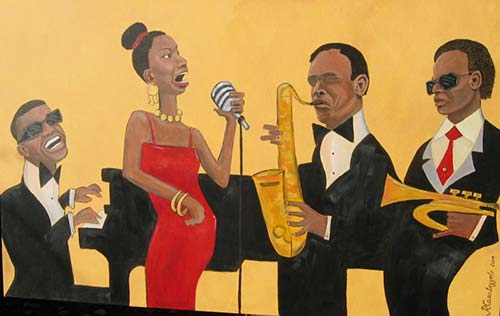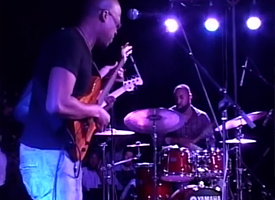Mini Jazz
Jazz has a poignant and straightforward history in Haiti. It all began in 1915, when the United States sent 330 Marines to occupy the capital city of Port-au-Prince. The fleet was dispatched in order to protect Haiti from interests conflicting with America’s, politically, economically, and socially. Ultimately, the time there served to ‘help stabilize’ a country that had had a very recent string of political assassinations; but the policing was certainly not without very stark and controversially selfish intentions. Some Haitians chose to respond to the occupation violently; there were many makeshift riots and coups that turned violent throughout the Haitian countryside. Others decided to instead react with cultural backlash, denying the strange new Western art forms and lifestyle that the American soldiers had in tote.

One of these was jazz music, and particularly big band. This subgenre’s sound, less sultry and more festive, caught on with the merengue fads of the time and piqued the local musicians’ interests. To the public’s surprise, former Haitian President Pierre Nord Alexis hired a well-known U.S. maestro named Fond Dabney as a presidential musical advisor for three years. This was despite a strange (perhaps estranged) relationship with the American government from previous interactions in his political career.
Getting Mini
Mini Jazz, or mini-djaz in Creole, began once many Port-au-Prince musicians, influenced by the uncanny popularity of American big band and the voodoo-fusion, mixed their musical styles with konpa. The movement started in the 1960s, after the U.S. occupation had long since ended and the cultural scars had had time to heal over and spread influence. In the massive mashup of genres, paired electric (jazz) guitars, an electric bass guitar, a horn (usually a saxophone), and a drum kit were employed.

Like many musicians worldwide in the field, mini jazz players are sensitive to the technicality of their work and want to make sure that what they are playing is both freeform and sophisticated. The way that Haitian practitioners worked to do this was by proliferating and incorporating common rhythms from other kinds of Haitian music, like rock and roll, konpa, or kadans.
Getting Big

In the 1970s, mini-djaz moved back toward the jazzy origins in Haiti by returning to a commonplace implementation of a horn section. This distinguished popular merengue bands from mini jazz at the time, as most serious mereng players strayed away from the use of large brass. With a fresh and renewed sound, mini jazz inspired newfound attraction and landed some local hits. In the mid-1980s, this tapered off to an extent – but today, the genre can still be found in Creole communities. To hear the best of the scene’s offerings, one might head to Port-au-Prince in Haiti, other neighboring Caribbean islands, New Orleans in the U.S., or the right parts of France.
Exile One, a very famous and influential kadans group who had their beginnings from the early 1970s, was a practitioner of mini-djaz from the start. They utilized synthesizers and a full horn section that inspired the trend toward returning to a heavy brass effect. They also proved that, with good musicianship, even something as structured and traditional as kadans can be molded into a new and exciting sound.
